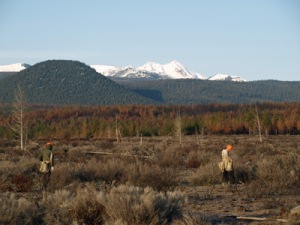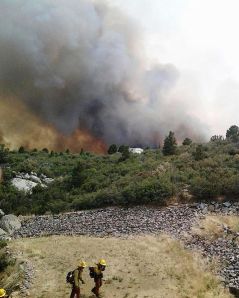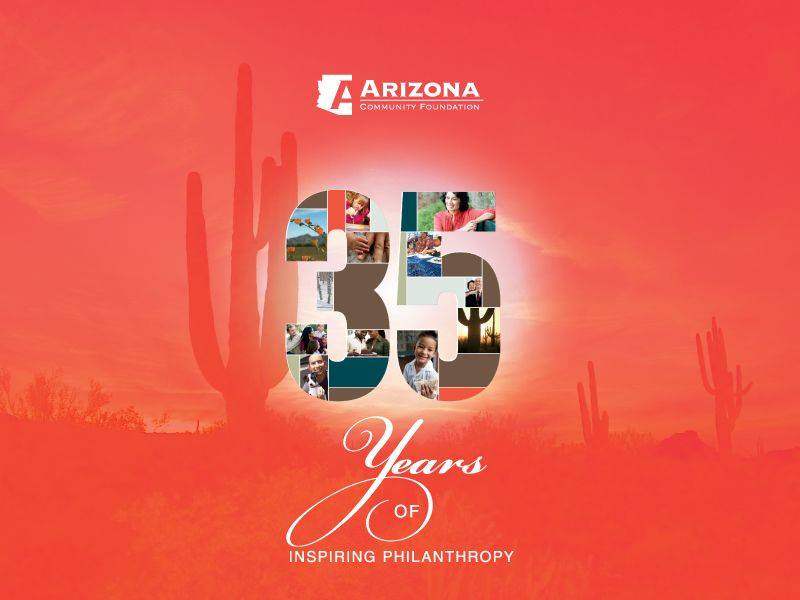If you grow up in south, you are very aware of hurricane season. If you grow up in the midwest, you know when to stay out of tornado alley. If you grow up in the east, you know you better stock up on food and supplies in the winter in case you are unable to leave your home during a blizzard. And if you grow up in the west you know that the hottest part of the summer is also the driest and the most vulnerable to wildfires. This past year the western United States saw destructive wildfires in Colorado, at Yosemite National Park and a particularly devastating fire in the small mountain community of Yarnell, Arizona. That fire resulted in highest loss of wild land firefighter life in the United States since the 1933.
Lightning struck on June 28th igniting what quickly became the Yarnell Hill Fire, in the small community of about 700 people located near the northern city of Prescott, about 80 miles northwest of Phoenix. The blaze burned 8,400 acres of land, destroyed 129 structures, and resulted in the tragic loss of 19 firefighters, all members of the Prescott Fire Department’s Granite Mountain Hotshots.
It took 13 days for the blaze to be fully contained. Strong winds, high temperatures around 101 degrees and long term drought in the area all contributed to the fire’s rapid spread and intensity. The fire’s heat melted pipes and caused leaks in the water system, resulting in an estimated loss of 40 percent of the water that still travels through the damaged pipes today. Another blow to a state with already significant water shortages.
While fire is as old as the earth and a natural benefit to many forest ecosystems the intensity of wildfires is increasing as a result of global warming. A report issued by the National Wildlife Federation titled Increased Risk of Catastrophic Wildfires: Global Warming’s Wake-Up Call for the Western United States names global warming as a major contributing factor to the increased frequency of large wildfires and the rise in total area burned in the Western United States. If the summertime temperature rises 2.9 degrees, the overall area burned across 11 states is expected to double by the end of the century. With the change in climate, we are seeing longer fire seasons, drier conditions and more frequent lightning, all factors that have the potential to lead to more deadly wildfires like the Yarnell Hill Fire.
Devastating wildfires are nothing new to western United States. But when one does occur, communities rally around each other for support. This week we highlight organizations that contributed to the Yarnell Hill Fire Relief effort and one working to restore damaged forests around the world.
– – –
Arizona Community Foundation – improving quality of life in Arizona by promoting and facilitating effective philanthropy
For the past 35 years the Arizona Community Foundation has acted as a statewide philanthropic leader promoting many issues including education, health, community development, the environment, arts and culture through more than 1,200 separate charitable funds. Since July 1st, the Arizona Community Foundation’s Yarnell Disaster Relief Fund received more than $750,000, in contributions which will go towards the re-building effort. The Arizona Community Foundation’s affiliate the Yavapai County Community Foundation is working with the Yarnell Hill Recovery Group Steering Committee to determine long-term local needs in order to distribute grants in the most effective manner.
A second separate effort by the organization, the Yarnell Memorial Scholarship Endowment, has received around $460,000 in contributions. This fund will provide college scholarships, pay for tuitions and other academic needs of the children of Granite Mountain Hotshots and other fallen firefighters.
You can donate to either the Arizona Community Foundation’s Yarnell Disaster Relief Fund or Yarnell Memorial Scholarship Endowment here.

Firefighters at a appreciation luncheon hosted by the Arizona 100 Club and Organ Stop Pizza in Mesa, AZ.
(Credit: Scripps Media, Inc. / ABC15)
The 100 Club of Arizona – standing behind men and women who stand behind the badge since 1968
For 45 years the 100 Club of Arizona has been providing financial, advisory and moral support to the families of fallen or seriously injured public safety officers and firefighters. The 100 Club concept began in Detroit, Michigan in 1952 after the fatal shooting of a police officer. A local Pontiac dealer, William M. Packer, was so moved by the story that he wrote to 100 of his friends encouraging them to donate to the fund for the fallen officer. Packer received a 100% response rate. In 1965 after a young police office was killed in the line-of-duty in Phoenix several acquaintances that knew of the Detroit 100 Club started the Phoenix 100 Club. The organization evolved over the years to incorporate the entire state of Arizona and today serves more than 50,000 public servants that routinely put themselves in harms way for the benefit of their community.
The organization estimates they received approximately $1.5 million in donations in response to the Yarnell Hill Fire. Much of the donations received went to the families of the 19 fallen hot shot firefighters. Funds were also used to pay for a memorial service, airfare, lodging and local transportation for family members to attend memorial services, and to deliver the fallen firefighters to their final resting places and to pay for their individual funerals.
To donate to the 100 Club of Arizona click here.

A 2012 Global ReLeaf project in Oregon’s Deschutes National Forest works to restore a landscape burned in the 2010 Rooster Rock Fire. (Credit: U.S. Forest Service)
American Forests – Global ReLeaf – protecting and restoring forests, helping to preserve the health of our planet for the benefit of its inhabitants
While wildfires provide natural benefits such as replenishing landscapes by returning nutrients to the soil when they are unable to be contained, they can wreak nearly irreparable damage on forests. After a wildfire destroys a forest sometimes the only option is to replant the trees that once stood in the now barren land. Replanting helps to restore ecosystems, prevent erosion and regenerates seed sources to prevent harmful weeds taking over the affected area.
The restoration of forests has a direct result on our plant’s climate. By absorbing the sun’s heat, trees cool the air. A tree’s tissue also stores carbon dioxide. Without this storage space, carbon dioxide would return to the atmosphere increasing the greenhouse gas effect to our environment. Forests are essential to reducing the impacts of climate change. The organization, American Forests, is working hard to ensure we have more trees and a healthier environment for the future.
American Forests Global ReLeaf projects help to restore forest ecosystems in all 50 U.S. states and in 44 countries world wide that have been damaged by wildfire, pests, disease, deforestation and other natural disasters. Since 1990 the organization has planted more then 44 million trees and as part of their grant program 25 new projects were selected in 2013 to reforest areas in 14 states and five countries. In addition to restoring ecosystems and protecting habitats American Forests offers several educational programs and tools to raise awareness and engage citizens in the benefits of forests and trees.
You can donate some green to help American Forests – Global ReLeaf project’s plant more green here.
– – –
If you know of other organizations that provide relief after wildfires or any organization providing specific relief to the communities affected by the Yarnell Hill Fire, please share them with us and our blog’s readers.
The Collaborative Services Team



Recent Comments